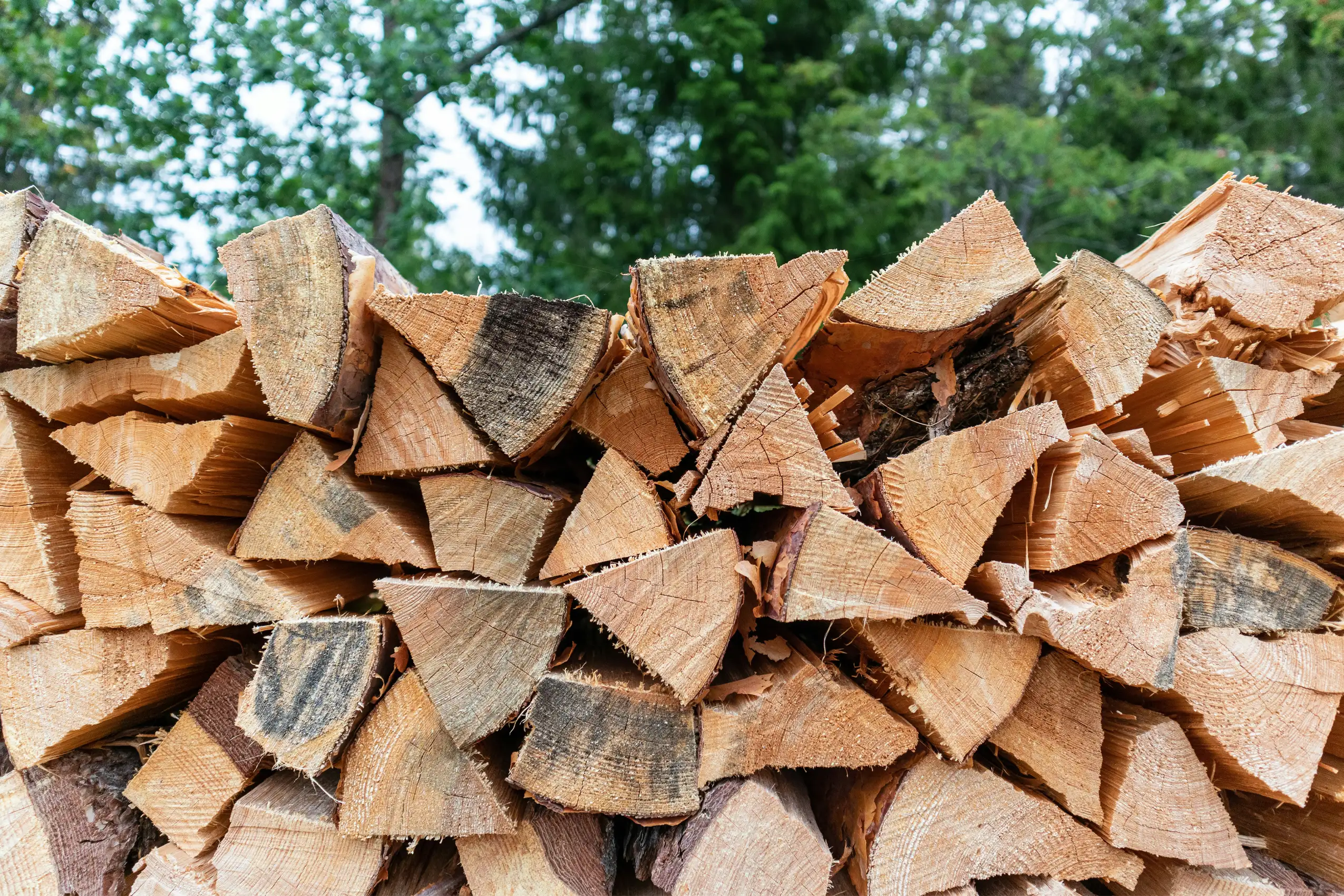Wet weather is no friend to your firewood. Whether you’ve stocked up on kiln-dried logs or ordered one of our bulk bags, knowing how to store your logs properly will keep them dry, efficient, and ready to burn when you need them most.
Here are our top tips for keeping your logs in perfect condition throughout the damp British weather.
1. Choose the Right Storage Location
Start by picking a storage area that’s sheltered from direct rainfall but still allows for air circulation. A purpose-built log store with open sides and a solid roof is ideal. If you’re short on space, position your logs against a south-facing wall or fence to maximise sun exposure and airflow.
Tip:
- Avoid placing logs directly against your house walls – moisture can build up and prevent airflow.
- Leave at least a 5cm gap behind your log stack for ventilation.
2. Elevate Your Logs Off the Ground
Never stack logs directly on soil or grass. Moisture rises from the ground and will quickly soak into the bottom layers, even if the top of the stack looks dry. Instead, use a raised platform such as:
- Pallets or bricks to lift your logs
- A gravel base for improved drainage
- A wooden frame or log rack
Keeping your logs off the ground not only prevents dampness but also improves airflow from below, helping them stay perfectly seasoned.
3. Cover Logs Properly – But Don’t Seal Them In
One of the biggest mistakes people make in wet weather is covering logs too tightly. Tarpaulins or plastic sheeting might seem helpful, but they can trap condensation and lead to mould. Instead:
- Use a breathable log store cover that protects from rain but allows moisture to escape.
- Leave the sides partially open for ventilation.
- If using a tarp, cover only the top of the stack, not the sides.
4. Stack Logs Correctly for Airflow
Proper stacking is key to keeping your firewood dry and usable. Stack logs with the bark facing upward and ensure the cut ends are exposed to air. This allows moisture to evaporate more efficiently. Avoid overly tight stacks – space between logs encourages air movement and prevents rot.
For best results:
- Stack in rows rather than heaps.
- Alternate the direction of each layer for stability.
- Keep stacks no higher than chest height to prevent collapse.
5. Rotate Your Stock Regularly
If you’ve been ordering logs throughout the year, make sure you’re burning the oldest ones first. Freshly delivered logs, even if kiln-dried, benefit from a few days of airflow before burning. By rotating your stock, you’ll ensure the driest logs are always used first and reduce the risk of damp wood building up over time.
6. Store Indoors When Possible
Bringing a small batch of logs indoors before use can make a big difference during wet spells. Keep a firewood basket or indoor log holder near your burner, and top it up every few days. This gives your logs time to adjust to room temperature and stay completely dry before lighting.
7. Check Moisture Levels Before Burning
Even with the best storage practices, it’s worth checking the moisture content of your firewood. Ideally, logs should have a moisture content below 20%. You can check this easily using a moisture meter. Burning damp logs not only produces less heat but can also cause excess smoke and soot buildup in your flue.
🔥 Keep Your Fire Burning Bright
At Peak Logs, we deliver softwood logs and hardwood logs that are kiln-dried and ready to burn — even through the wettest months. All our products are Woodsure Ready to Burn certified, ensuring efficient, high-heat output and clean combustion.
FAQs: Storing Logs in Wet Weather
Can I store logs outside in the rain?
Yes, you can store logs outdoors as long as they’re protected from direct rainfall and have good airflow. Use a covered log store or a breathable cover to keep them dry.
How long can logs stay outside before going bad?
Properly stacked and covered logs can last for years. However, if they’re left in contact with moisture or poorly ventilated, they can begin to rot within a few months.
Can I burn damp logs?
It’s best not to. Damp logs produce more smoke and less heat, and they can cause tar and soot to build up in your chimney or flue. Always use kiln-dried logs for optimal performance.
Should I bring logs indoors before using them?
Yes – bringing logs inside for 24 to 48 hours before burning helps ensure they’re completely dry and ready to burn efficiently.
Final Thoughts
Storing logs in wet weather doesn’t need to be a challenge. With the right setup, your firewood will stay dry, clean, and ready to keep your home warm all year round. For premium kiln-dried logs and convenient free local delivery within 18 miles of Buxton, order today from Peak Logs.
